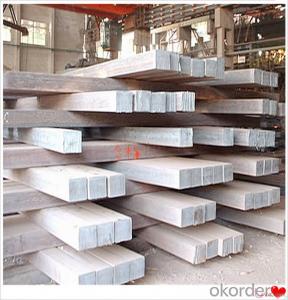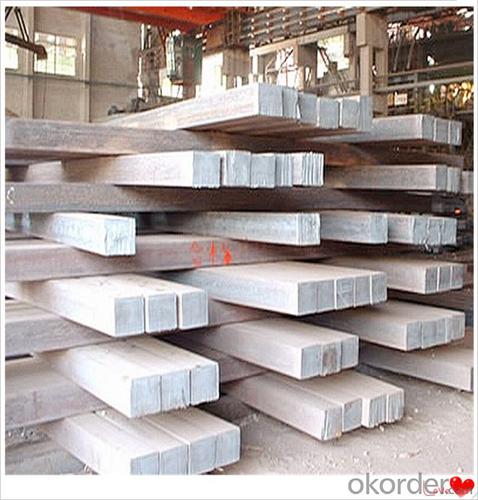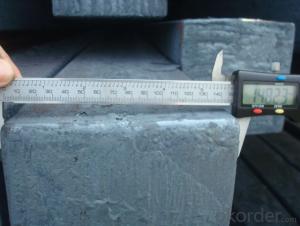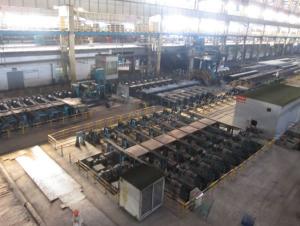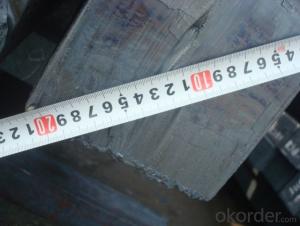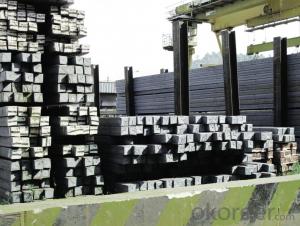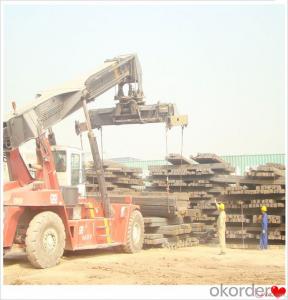Steel Billet Steel Camshaft Q235,Q255,Q275,Q345,3SP,5SP,20MnSi
- Loading Port:
- China main port
- Payment Terms:
- TT OR LC
- Min Order Qty:
- 20 m.t.
- Supply Capability:
- 200000 m.t./month
OKorder Service Pledge
OKorder Financial Service
You Might Also Like
Steel Billet Steel Camshaft Q235,Q255,Q275,Q345,3SP,5SP,20MnSi
Specification
Steel billet(ingot) by cogging or breakdown of semi-finished products, is the raw material of all kinds of steel mill. Billet section of square, round, flat, rectangular and abnormity of several kinds of, mainly related to the shape of rolled products.
CNBM Q235,Q275,Q345,3SP,5SP,20MnSi Billets Steel
Hot Rolled Steel Billets/ Mild Steel Bar/ Billet Steel
Specification (see below)
Standard: GB/JIS/ASTM
Size: 50*50mm-180*180mm
Length: 3-12mtrs or Customised
Steel material: Q235,Q255,Q275,Q345,3SP,5SP,20MnSi
Technique: Hot rolled
FOB Unit Ton Price $250-350 and Usually I will quote you CFR price.
MOQ: Usually 1000-10000MT/size
Shipment:By Container,Bulk Vessel
Packaging Details: bundles with steel strips or as customers's requirements
Delivery time: Usually within 30 days after the deposit/LC
Inspection:Third party inspection before loading.
Technical data
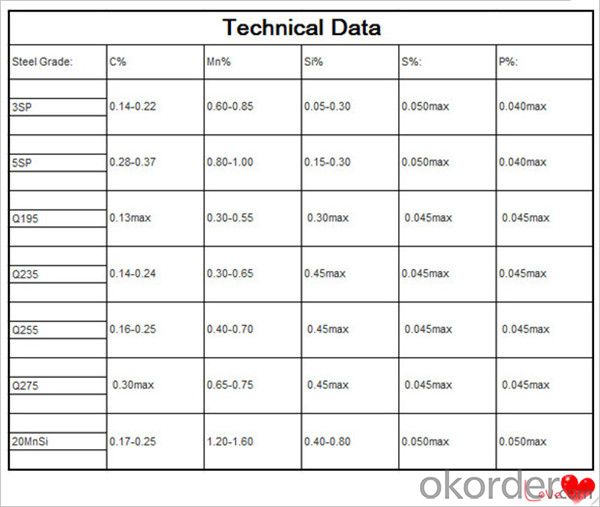
Feature Steel Billet
Rectangular billet continuous casting billet and mainly general carbon steel, low carbon low silicon cold-rolled material, high quality carbon structural steel, high strength low alloy steel, special steel, etc.
The billet is mainly divided into two kinds from the shape:
Slab: cross section width and height of the ratio of the larger, mainly used for rolling plate.
Billet: equal cross section width and height, or a huge difference, mainly used for rolling steel, wire rod. ,
Steel billets have distinct characteristics as compared with already furnished steel bars and products. Billets have a specific grain structure, which enables the metal to be processed more intricately. Steel billets are also known for their malleability and ductility, especially when exposed to varying temperatures during shaping and molding.
Packaging & Shipping
1. Packaging:
1) Small size: in bundles
2)Big size: in bulk
3)in plastic packing or as per customer requirement
2. Delivery time:
1) Normal size: within 7days send from warehouse directly
2) Special size: with 25-30days customer made for you
3. Trade terms:FOB/CFR/CIF
4. Shippment:
1) length:≤5.8m loaded in 20FT Container with 25-27tons
2) length:≤11.8m loaded in 40FT Container with 25-27tons
3) lengnth:≥12m shipped by bulk vessel, FILO terms
Steel Billet Images
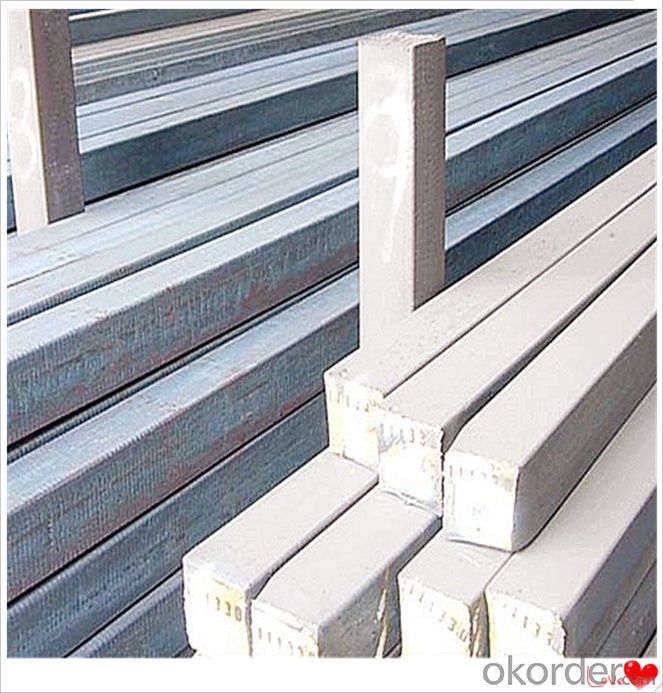
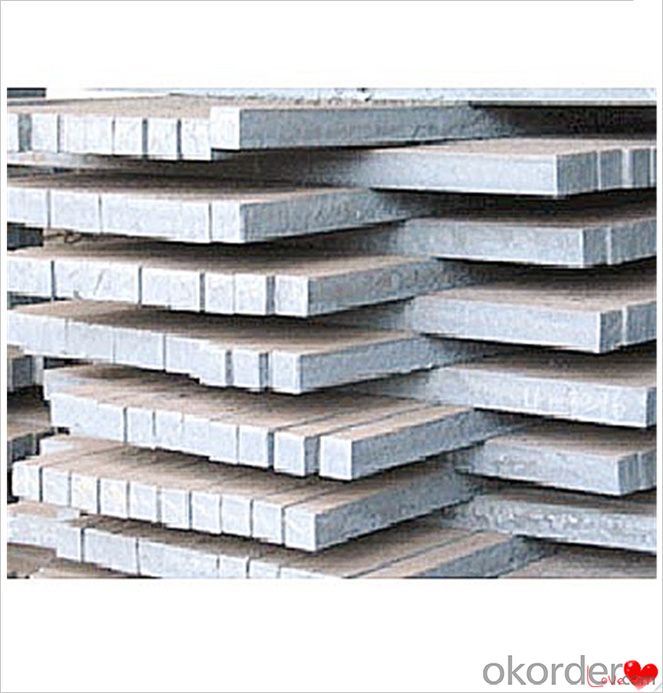
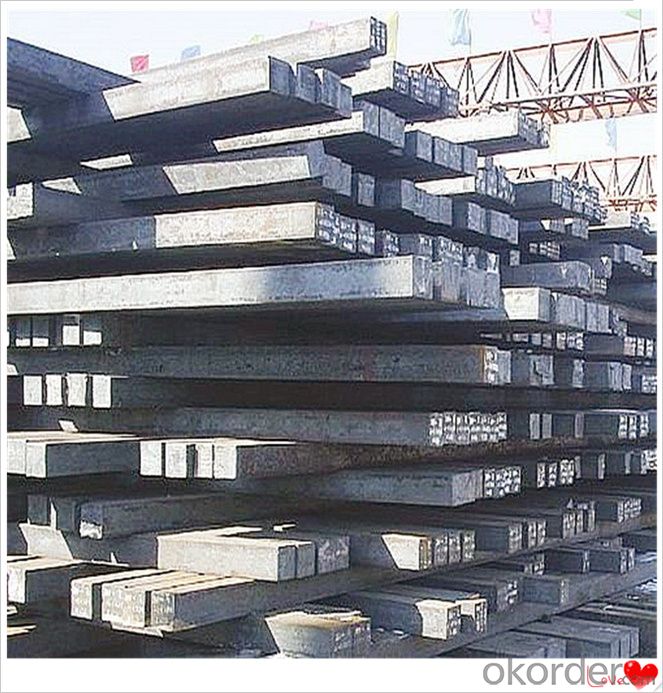
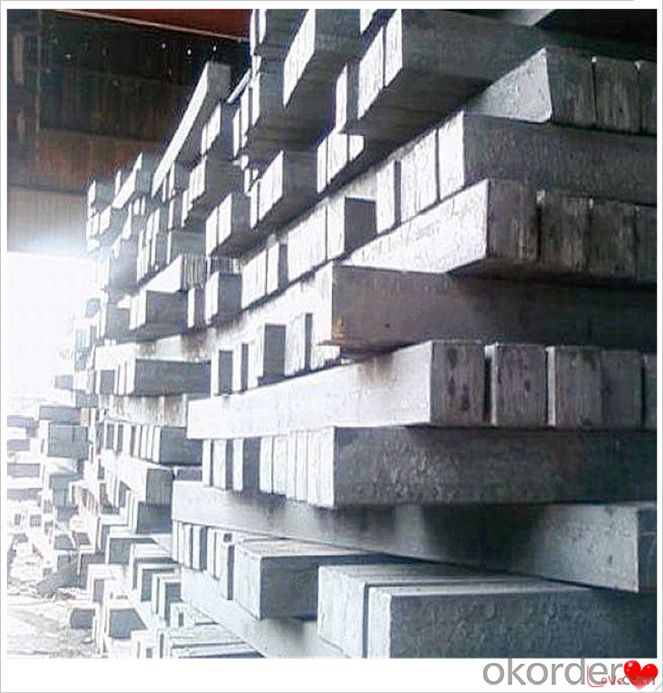
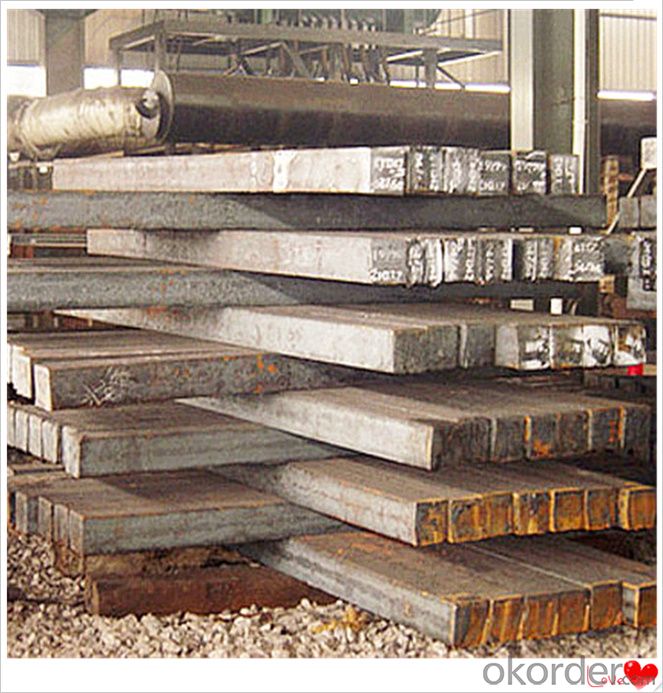
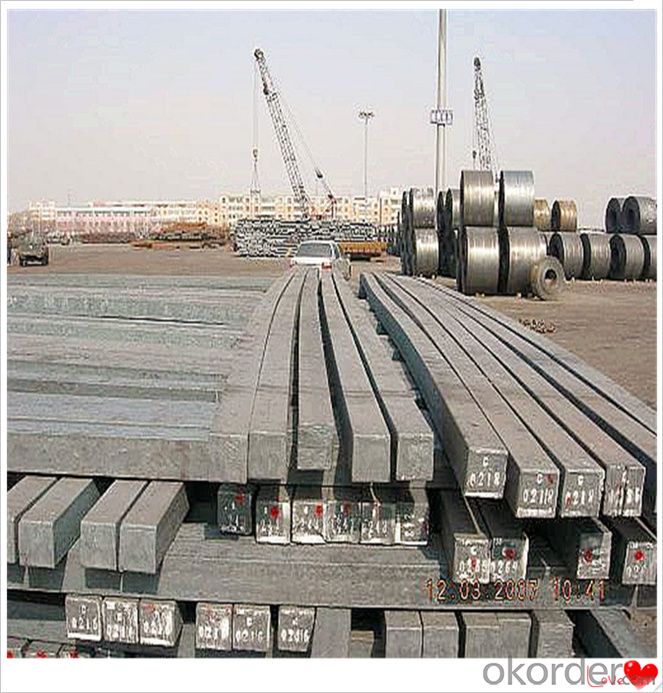
Processing
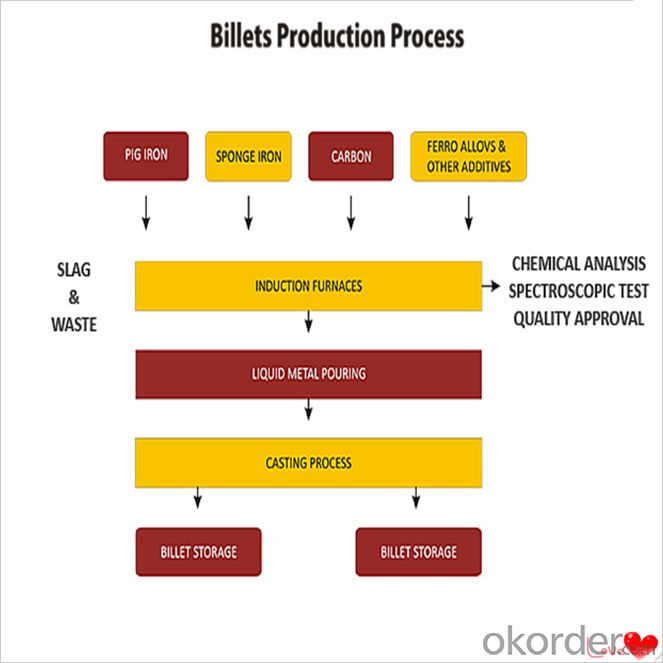
Usage-Billet Steel
Used for the plant, the bridge,shipment building high-rise building construction,lifting and transportation machinery, equipment manufracturing base building the support foundation pile manufacturing.
Billets, or ingots (as they sometimes referred to), are not of practical use until they have been formed into more functional shapes and sizes. While they have already been put in the furnace, they still require a series of shaping and molding procedures such as hot and cold working, milling and cutting before they are sold in hardware stores, or used for different applications. The unformed billets, however, can be used in striking currency such as coins and as reserves, similar to gold bars.
FAQ-Billet Steel
We have organized several common questions for our clients,may help you sincerely:
1) How about your company?
A world class manufacturer & supplier of castings forging in carbon steel and alloy steel,is one of the large-scale professional investment casting production bases in China,consisting of both casting foundry forging and machining factory. Annually more than 8000 tons Precision casting and forging parts are exported to markets in Europe,America and Japan. OEM casting and forging service available according to customer’s requirements.
2) How to guarantee the quality of the products?
We have established the international advanced quality management system,every link from raw material to final product we have strict quality test;We resolutely put an end to unqualified products flowing into the market. At the same time, we will provide necessary follow-up service assurance.
3) How long can we receive the product after purchase?
In the purchase of product within three working days, We will arrange the factory delivery as soon as possible. The pecific time of receiving is related to the state and position of customers.Commonly 7 to 10 working days can be served.
4)Do you have your own QC department?
Yes, we have, our QC department will inspect the goods during the process of mass production and after completion of production.
hot sale!!! Cast Steel Grades/ mild steel bar/ billet steel
(1): High quality steel with reasonable price.
(2): Wide excellent experiences with after-sale service.
(3): Every process will be checked by responsible QC which insures every product's quality.
(4): Professional packing teams which keep every packing safely.
(5): Trial order can be done in one week.
(6): Samples can be provided as your requirements.
- Q: What is the role of steel billets in the manufacturing of conveyor systems?
- Steel billets play a crucial role in the manufacturing of conveyor systems. These billets serve as the raw material for the production of various components and parts that make up the conveyor system. Firstly, steel billets are used to create the framework and structure of the conveyor system. They are shaped and cut to form the main frame, supports, and other structural elements that provide stability and strength to the entire system. The high strength and durability of steel make it an ideal material for this purpose, ensuring that the conveyor system can withstand heavy loads and operate efficiently. Secondly, steel billets are utilized in the production of rollers and pulleys, which are essential components of conveyor systems. These rollers and pulleys are responsible for guiding and moving the conveyor belt, enabling the smooth and continuous flow of materials. Steel billets are forged and machined to create these components, ensuring their reliability and longevity even under demanding working conditions. Additionally, steel billets are also used to manufacture various brackets, connectors, and fasteners that hold the different parts of the conveyor system together. These components provide the necessary connections and attachments, ensuring the proper assembly and functioning of the conveyor system. Furthermore, steel billets can be molded and shaped into customized parts as per the specific requirements of the conveyor system. This flexibility allows conveyor manufacturers to design and produce conveyor systems that are tailored to the unique needs of different industries and applications. In summary, steel billets are integral to the manufacturing of conveyor systems as they provide the raw material for the construction of the system's framework, rollers, pulleys, brackets, connectors, and other components. Their high strength, durability, and flexibility make steel billets an essential ingredient in creating reliable and efficient conveyor systems.
- Q: How do steel billets contribute to the manufacturing of marine gear?
- The unique characteristics and properties of steel billets are crucial in the manufacturing of marine gear. Marine gear, which includes propeller shafts, gears, and bearings, requires high strength, resistance to corrosion and wear. To start the manufacturing process, steel billets are used as the starting material. These semi-finished metal forms are typically made from carbon or alloy steel and are shaped into long, rectangular bars. The specific marine gear components are created through further processing of these billets. The strength of steel billets is ideal for marine gear manufacturing as it allows them to withstand heavy loads and intense pressures in marine environments. This ensures the durability and reliability of the gear components, minimizing failures and enhancing safety. Corrosion resistance is also crucial in marine gear manufacturing. Steel billets can be made from stainless steel, which contains chromium and other alloying elements that form a protective layer on the surface. This protective layer prevents rust and corrosion caused by exposure to saltwater, ensuring the longevity and performance of the components in harsh marine conditions. Additionally, steel billets can be heat-treated to improve their mechanical properties such as hardness, toughness, and wear resistance. This involves heating the billets to specific temperatures and then cooling them rapidly or slowly, depending on the desired properties. Heat-treated steel billets provide the necessary hardness and wear resistance required for gears, shafts, and bearings to withstand the constant friction and stress in marine applications. In conclusion, steel billets play a significant role in marine gear manufacturing by providing the required strength, corrosion resistance, and mechanical properties. They serve as the foundation material for creating durable and reliable components that can withstand the challenging conditions of the marine environment.
- Q: What is the difference between continuous casting billet and cast billet?
- Mainly to see the process, general casting efficiency is low, but the quality is acceptable, with low level (open casting billet) has great advantages in surface quality; but with high-grade continuous casting line (full protection casting, electromagnetic stirring, liquid stopper control) compared both have a big difference in the crystal, oxidation, surface quality.
- Q: What are the different methods of steel billet surface grinding?
- There are several methods of steel billet surface grinding, including abrasive grinding, belt grinding, and centerless grinding.
- Q: What are the different packaging options available for steel billets?
- There are several different packaging options available for steel billets, depending on the specific requirements and preferences of the customer. Here are some common packaging options: 1. Wooden Crates: Steel billets can be packaged in wooden crates for protection during transportation and storage. These crates are sturdy and provide a barrier against moisture and physical damage. 2. Steel Frames: Another option is to package the steel billets in steel frames. These frames are typically made of strong and durable steel bars that securely hold the billets in place, providing stability and protection. 3. Plastic Wrapping: Steel billets can also be packaged using plastic wrapping. This method involves wrapping the billets tightly in plastic film, which helps to protect them from dust, moisture, and scratches. 4. Wire Binding: Wire binding is a common packaging option for steel billets. It involves using steel wires to bundle the billets together, providing stability and preventing movement during transportation. 5. Customized Packaging: Some customers may require customized packaging options for their steel billets. This can include using specific materials, such as foam or cardboard, to provide additional protection or incorporating branding elements onto the packaging. Ultimately, the choice of packaging option will depend on factors such as the size and weight of the steel billets, the mode of transportation, and the specific requirements of the customer. It is important to consider factors such as protection, stability, ease of handling, and cost-effectiveness when selecting the most suitable packaging option for steel billets.
- Q: How do steel billets contribute to the energy efficiency of a structure?
- There are several ways in which steel billets contribute to the energy efficiency of a structure. Firstly, steel billets are a primary raw material for producing structural steel, which is known for its high strength-to-weight ratio. This quality allows steel structures to bear heavy loads without needing excessive amounts of material. As a result, structures made of steel are lighter and more energy efficient. The reduced weight leads to lower transportation costs and less energy consumption during construction. Moreover, steel billets can be easily molded and shaped into different forms, enabling the design and construction of more efficient and streamlined structures. The flexibility of steel as a construction material empowers engineers and architects to create innovative designs that maximize energy efficiency. For instance, steel can be used to construct long-span structures, which reduces the need for additional support columns and optimizes natural lighting and ventilation. Consequently, this decreases the reliance on artificial lighting and HVAC systems. Additionally, steel is highly durable and requires minimal maintenance throughout its lifespan. This durability not only extends the life of the structure but also reduces the energy and resources needed for repairs and replacements. Steel structures also possess excellent fire resistance properties, which contributes to energy efficiency by minimizing fire-related damages and the subsequent energy consumption associated with rebuilding or repairing. Lastly, steel is highly recyclable. At the end of a structure's life, steel components can be salvaged and recycled easily, decreasing the demand for new steel production and conserving natural resources. The recycling process for steel is energy-efficient compared to the production of new steel, further reducing the carbon footprint of the structure. In conclusion, steel billets enhance the energy efficiency of a structure through their high strength-to-weight ratio, design flexibility, durability, fire resistance, and recyclability. These properties enable the construction of lighter, more efficient structures that require less energy during construction, operation, and maintenance. Consequently, they minimize environmental impact.
- Q: What is the average price of steel billets?
- The average price of steel billets can vary depending on various factors such as market demand, global economic conditions, and raw material costs. It is recommended to check with current market data or consult industry experts to obtain the most accurate and up-to-date information on the average price of steel billets.
- Q: How are steel billets used in the manufacturing of automotive parts?
- Steel billets are an essential raw material used in the manufacturing of automotive parts. These billets, which are typically short, solid pieces of steel, serve as the starting point for various automotive components. Firstly, steel billets are heated and then passed through a series of rolling mills to convert them into different shapes and sizes. This process, known as hot rolling, allows the steel billets to be transformed into bars, rods, or sheets that can be further machined or formed into automotive parts. The automotive industry relies heavily on steel billets to produce a wide range of components, such as engine blocks, crankshafts, suspension parts, and chassis frames. These parts require high strength and durability to withstand the demanding conditions of vehicles. Engine blocks, for example, are typically made from cast iron or aluminum alloys produced from steel billets. The billets are melted and poured into molds to create the desired shape, which forms the foundation of the engine. Similarly, crankshafts, which transfer power from the engine to the wheels, are often forged from steel billets to ensure strength and precision. Suspension parts, such as control arms and torsion bars, also rely on steel billets for their manufacturing. These parts need to withstand the forces and impact of the road, and steel provides the necessary strength and resilience. Billets are machined and shaped to create the required geometry and then assembled with other components to form the suspension system. Additionally, steel billets are used in the production of chassis frames, which provide the structural integrity and support for the entire vehicle. These frames are typically made from steel tubes or sections formed from billets. The billets are shaped, welded, and joined together to create a strong and rigid framework that gives stability and ensures safety. In conclusion, steel billets play a crucial role in the manufacturing of automotive parts. With their versatility and strength, they are transformed into various components that form the backbone of vehicles, ensuring durability, performance, and safety on the road.
- Q: What are the different surface treatments applied to alloy steel billets?
- Enhancing the properties and performance of alloy steel billets can be achieved through various surface treatments. One commonly used treatment involves bombarding the billet surface with small metal or ceramic particles at high velocity, a process known as shot blasting. This effectively eliminates impurities and contaminants, resulting in a clean and uniform surface finish. Additionally, shot blasting promotes the adhesion of subsequent coatings or treatments. Another method, known as pickling, entails immersing the billets in an acid solution to remove oxides and scale from the surface. This not only improves the surface quality but also eliminates any defects, preparing the billets for further processing or treatments. Heat treatment is a popular surface treatment for alloy steel billets. By subjecting the billets to controlled heating and cooling processes, their microstructure can be altered, leading to improved mechanical properties. This treatment can enhance the hardness, strength, and toughness of the billets, rendering them more suitable for specific applications. Furthermore, alloy steel billets can be coated with protective coatings to enhance corrosion resistance and durability. Common techniques include hot-dip galvanizing, electroplating, and painting. These coatings serve as a barrier between the alloy steel surface and the environment, effectively preventing corrosion and extending the lifespan of the billets. To summarize, shot blasting, pickling, heat treatment, and protective coatings are among the various surface treatments applied to alloy steel billets. These treatments enhance surface quality, improve mechanical properties, and protect against corrosion, ensuring optimal performance in diverse applications.
- Q: What is the role of steel billets in the construction of high-rise buildings?
- Steel billets play a vital role in the construction of tall buildings, serving as the raw material for structural components like beams, columns, and girders. Their exceptional strength and durability make them ideal for supporting heavy loads and resisting external forces such as wind and earthquakes. Furthermore, steel billets offer design and construction flexibility, allowing architects and engineers to create intricate and visually appealing structures. Their versatility also enables the construction of large spans, reducing the need for excessive supporting columns and maximizing usable space. In addition, steel billets are highly resistant to corrosion and fire, ensuring the longevity and safety of skyscrapers. The galvanized or coated surface protects against rust, while the fire-resistant properties of steel maintain its strength at high temperatures. Moreover, steel billets contribute to the sustainability and environmental efficiency of high-rise construction. The use of recycled steel billets reduces the demand for virgin resources and minimizes waste, aligning with sustainable development principles. In conclusion, steel billets are crucial for constructing tall buildings due to their strength, durability, flexibility, resistance to corrosion and fire, and contribution to sustainable development. They enable the creation of robust, safe, and aesthetically pleasing structures that can withstand various forces and optimize space utilization.
Send your message to us
Steel Billet Steel Camshaft Q235,Q255,Q275,Q345,3SP,5SP,20MnSi
- Loading Port:
- China main port
- Payment Terms:
- TT OR LC
- Min Order Qty:
- 20 m.t.
- Supply Capability:
- 200000 m.t./month
OKorder Service Pledge
OKorder Financial Service
Similar products
Hot products
Hot Searches
Related keywords
